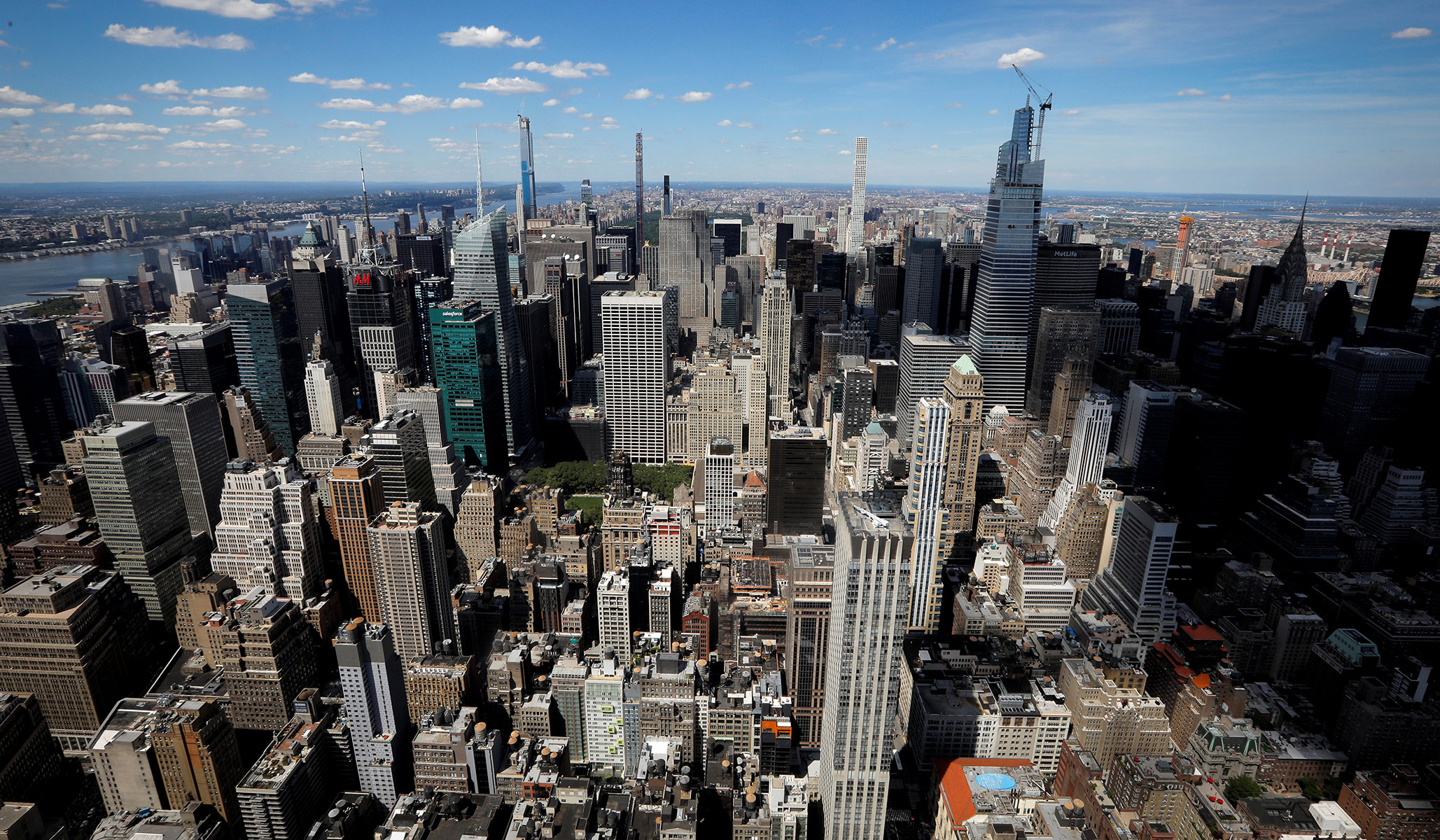


Some of the holders of New York commercial real estate (or of some buildings anyway) appear to be throwing in the towel.
Peter Grant, writing in the Wall Street Journal:
Some of New York’s best known real-estate developers are unloading their least viable office buildings at deep discounts, cracking open a sales market that had all but closed in the first quarter.
RXR defaulted on the $240 million loan on its 33-story office tower in lower Manhattan. The developer, which owns and manages dozens of commercial and residential properties in the New York City area, has said that it will turn over ownership of the office tower at 61 Broadway to whoever buys the defaulted debt. That mortgage is being marketed by commercial real-estate services firm JLL and will likely go for about half the $440 million valuation of the building in 2016, market participants said.
The significance of moves such as this, other than the confirmation (as if one were needed) of the poor shape of the office-property market, is that it may bring that market back to life, by setting in motion the process whereby prices can be found at which sellers, however glumly, are prepared to sell, and buyers, however nervously, are prepared to buy.
Up until now, the market has been more or less frozen.
Grant:
In the first quarter of 2023, investors purchased only $489.5 million in Manhattan office properties, the lowest volume since the fourth quarter of 2009, around the height of the global financial crisis, according to data firm MSCI Real Assets. By comparison, volume was $5 billion in the first quarter of 2022, MSCI said.
Lockdowns have consequences (although, to be fair, the market is being hit by more than the lockdown-fueled acceleration of working from home).
Grant:
Sales for the mortgage on 61 Broadway and Silverstein’s Fifth Avenue office building could help jump-start the market, because other buyers and sellers will use those transactions to help determine values.
“We’re starting to see a thaw and more product coming to the market,” said Gary Phillips, managing director of Eastdil Secured, a real-estate investment banking firm.
But even if sellers are appearing, will buyers?
Grant describes the emergence of a two-tiered market, where the best buildings seem to be doing well (the facilities they offer may even tempt some workers back). The problem is elsewhere:
There is still a glut of run-of-the-mill space that requires a big capital investment by landlords for upgrades necessary to attract tenants.
Indeed, and the cost of that investment will be made even higher by the expensive retrofitting requirements landlords will face under new climate-driven regulation (I wrote about this here). If New York City is serious about reviving the prospects of buildings where, in some cases, abandonment is the most cost-efficient option, bringing urban blight in the wake of their failure, it will drop the retrofitting requirement (which is, anyway, retrospective legislation, and as such distinctly unfair). I’m not holding my breath.
The cost of (supposedly) green retrofitting is only one of the factors that make the current weakness in the sector much more worrying than would be the case with a routine cyclical downturn. It’s also necessary to factor in the fact that many of these buildings were priced at valuations that reflected ultra-low interest rates (in nominal terms) that may take a long, long time to return, if ever.
And then, of course, on top of that there are the uncertainties brought about by WFH. We will not, I suspect, be in a position to really “know” just how permanent that change in working habits will turn out to be until the economy goes into recession. At that point, I would guess that more workers, worried about their jobs, will want to be seen at their desks. What’s more, in a recession, management will be in a better position to insist that workers return to 9–5. On the other hand, recessions, by definition, are bad for business, and thus the office-property market. Win some, lose some.
There is also the question of how long it is possible to efficiently run a company that is frozen, in a sense, in 2020. To move a business forward remotely is no easy task. And then there’s the small matter of productivity. There are plenty of data showing that WFH increases productivity, but there are also data showing the opposite, data that might, moreover, appeal to the in-built bias of many CEOs.
One final (for now) issue may be that managements may want to see more of their workers return to the office, but, pulled by technology and employee preference and pushed by high taxes, will be much more willing to see those offices located in places other than Manhattan.
Grant:
A lot of buyers have been steering clear of New York office buildings, especially traditional office buyers like insurance companies and pension funds. But investors are beginning to notice the low price tags.
“When New York gets cheap, people around the world talk about it,” said Will Silverman, a…managing director [of Eastdil Secured, a real-estate investment banking firm].
Talking is one thing, buying is quite another, particularly given all the problems and uncertainty facing this market. If we are approaching a market-clearing moment, it may well be a rather prolonged “moment” that turns out to be even more painful than vendors already expect. And as for New York City’s mayor, looking at his tax base, well . . .
